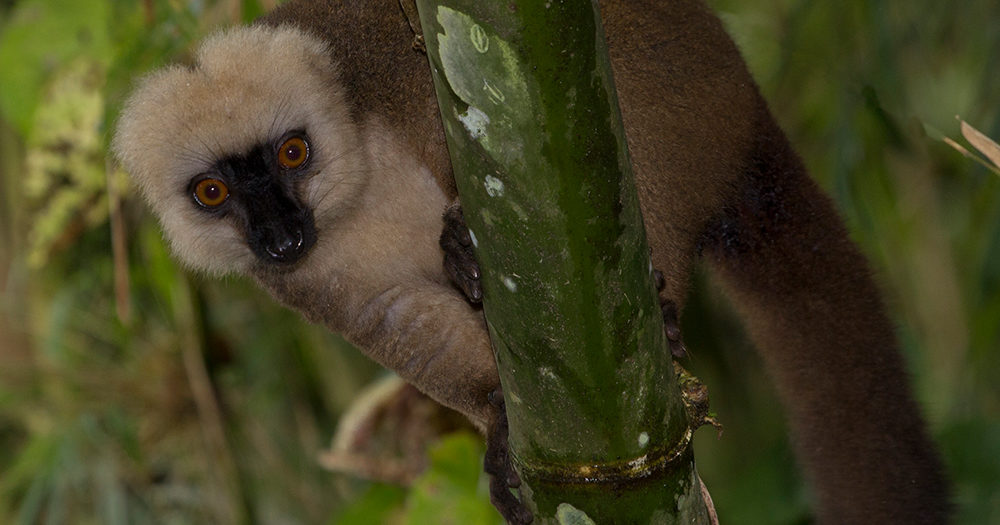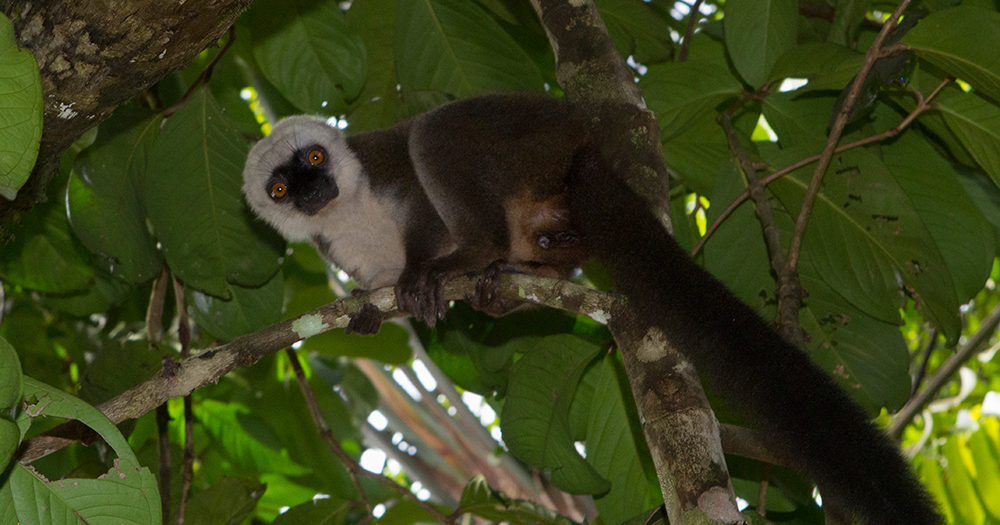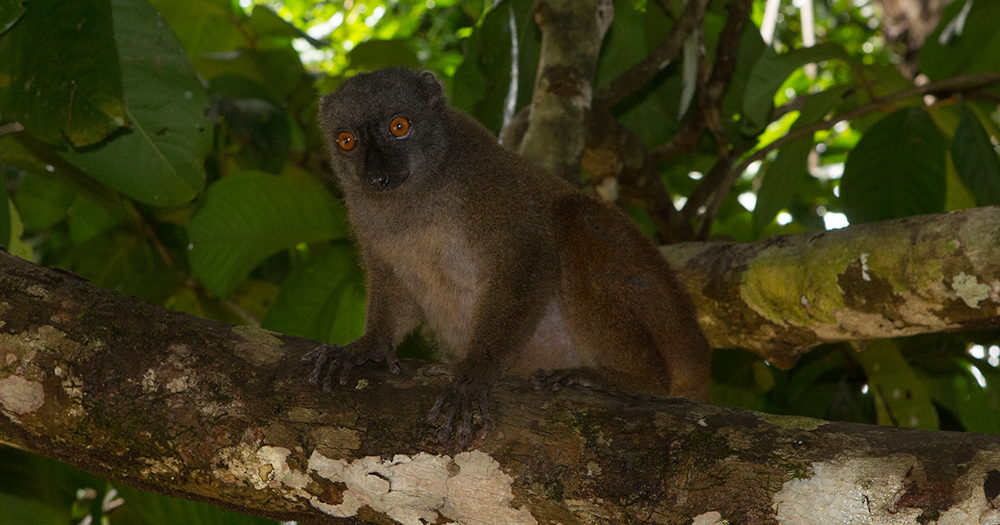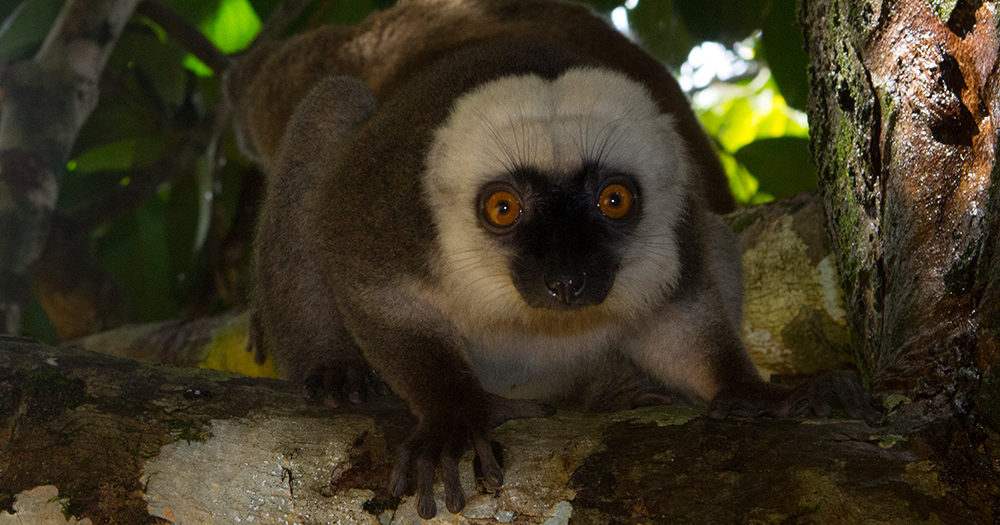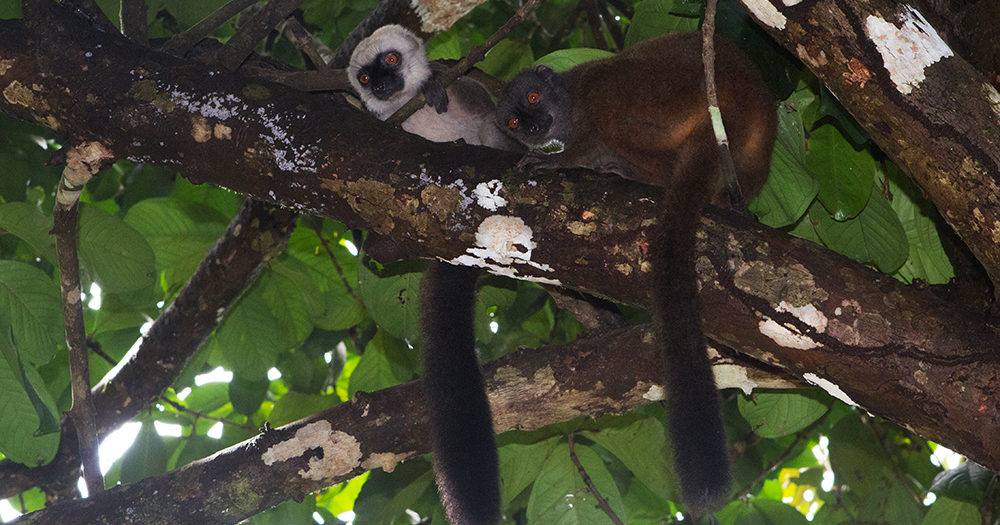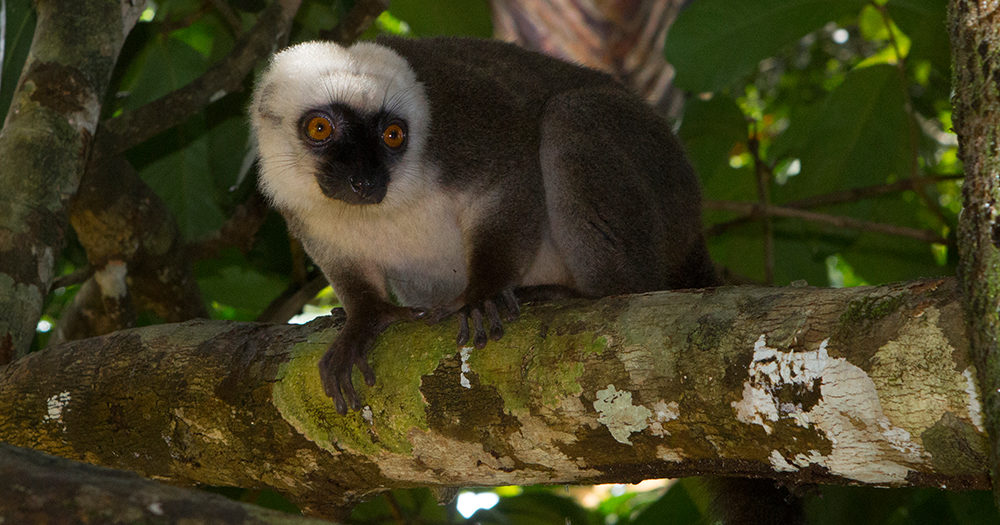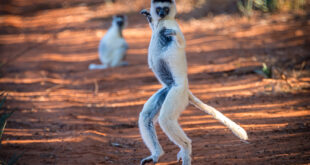White-fronted lemurs (Eulemur albifrons) carry their name thanks to the appearance of the males: They have white fur around their face, which makes them look a bit old and wise. The corresponding females are rather unobtrusively colored and have completely brown fur. With two to two and a half kilos the lemurs are not very large, the weight is more like that of a small cat.
White-fronted lemurs are usually diurnal but are considered cathemeral. This means that they adapt their rhythm to the season and the food supply. In case of doubt, this means that they can also search for food at night. In the early morning, when it is still pleasantly cool and the morning dew moistens trees and leaves, white-fronted lemurs go in search of food on good days. Leaves and blossoms are the most common ones, and in the rainy season sometimes fruits and buds. In contrast to many other lemurs, white-fronted lemurs also regularly have insects on their menu. When it gets hotter around noon, white-fronted lemurs rest in the treetops until the afternoon, engage in social interaction and doze a lot. Only when it is getting dark again is it time for a second feeding round.
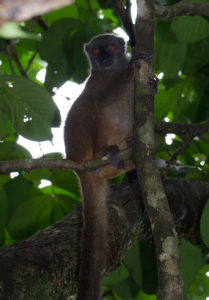
The mating season of white-fronted lemurs begins at the beginning of the dry season. Little is known about the mating itself. Each female gives birth to only one young after four months. It is carried on the belly for the first three weeks and rides on the mother’s back only later. From there it slowly discovers the world. It may nibble on a leaf of another member of the group or try a grasshopper out of mama’s hand, but will still be suckled. At about half a year of age, the young is weaned, usually in the middle of the rainy season and thus during the best food supply. This gives the young white-fronted lemur the best opportunity to grow up and later to provide for its own offspring.
A small peculiarity among these lemurs is the fact that the females are not known to be in charge of the groups. This is very unusual because, with most lemurs, the females rule everything the group does. With the white-fronted lemurs, however, this is not so. There seems to be more of a form of equality between the sexes with these lemurs. The groups consist of up to nine animals, among which no real hierarchy can be observed.
White-headed lemurs only exist in the northeast of Madagascar and nowhere else in the world. Their main habitat is around the bay of Antongil, the “cradle of whales”. One finds them exclusively in the intact rainforest. They do not inhabit rainforests destroyed by slash-and-burn or logging, which is why they are massively threatened by the decline of their habitat. On the IUCN red list, their status is now indicated as “endangered” because the population size has been steadily decreasing for years.
White-fronted lemurs can be observed in the wild in the Marojejy and Masoala National Parks with the associated island of Nosy Mangabe. They are not very shy and, like all curious macaws, often come relatively close to the observer. How old the lemurs can become is unknown. It is assumed that they can live up to 20 years in nature, similar to the closely related black lemurs.
 MADAMAGAZINE Your Magazine about Madagascar
MADAMAGAZINE Your Magazine about Madagascar
